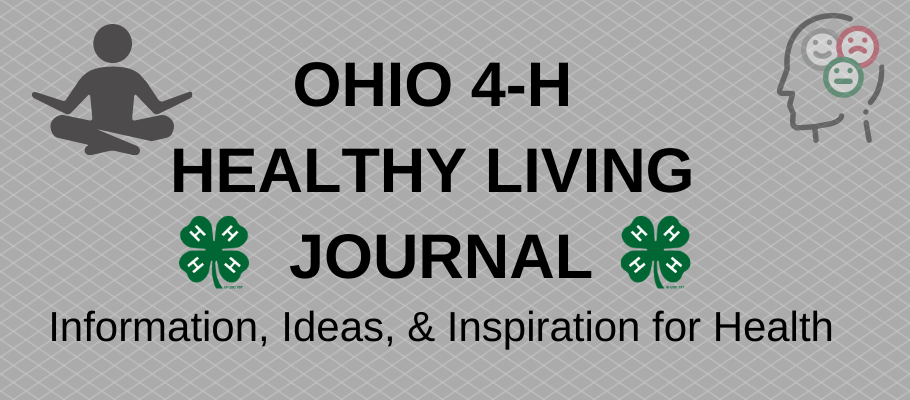by Theresa Ferrari, Extension Specialist, 4-H Youth Development
Today, Trust for America’s Health released The State of Obesity: Better Policies for a Healthier America, its 18th annual report on the nation’s obesity crisis. The report provides an annual snapshot of rates of overweight and obesity for U.S. adults by age, race/ethnicity, and state of residence. They found that 16 states have adult obesity rates at 35% or higher, up from 12 states in 2019. Unfortunately, with a rate of 35.5%, Ohio is one of those 16 states (see map).

Map of U.S. Adult Obesity Rates, from The State of Obesity 2021, Trust for America’s Health
Obesity means that an individual’s body fat and body-fat distribution exceed the level considered healthy and traditionally has been measured by body mass index (BMI). Obesity is defined as a BMI of 30 or higher. The U.S. adult obesity rate has been increasing for decades. As recently as 2012, no state had an adult obesity rate above 35%. It passed 40% for the first time in 2017–2018, now standing at 42.4% overall.
Not surprisingly, the report also noted that social and economic factors linked to obesity were exacerbated by the COVID-19 pandemic. During the pandemic people’s eating habits shifted, levels of food insecurity worsened, physical activity declined, and stress and anxiety increased. These conditions added to the decades long pattern of obesity in America.
Although the report looks at adult obesity, rising obesity rates are also a problem among children and adolescents. Nearly 1 in 5 (19.3%) of U.S. children ages 2 to 19 have obesity. This rate has more than tripled since the mid-1970s. Black and Latino youth have substantially higher rates of obesity than do their White peers.
Obesity has consequences. In adults, obesity is associated with a range of diseases, including type 2 diabetes, heart disease, stroke, arthritis, sleep apnea, and many types of cancers, and now higher rates of complications and serious illness from COVID-19.
The prevalence of obesity increases with age, and researchers and practitioners are alarmed by the increased prevalence of chronic diseases among children and adolescents. For example, the incidence of type 2 diabetes in young people has increased significantly.
Establishing good habits early in life is important, because childhood obesity is strongly correlated with risk of adult obesity and poor health. In other words, children who are obese are on a pathway to poor health as adults. The evidence that links lifestyle behaviors (such as food and beverage consumption and physical activity levels) to risks for chronic conditions in adulthood is mounting. By contributing to overweight and obesity, these conditions increase the risk for heart disease, high blood pressure, and type 2 diabetes later in life.
Although important, efforts to change individual behaviors are not enough to make a difference when a problem is this widespread. As suggested by its title, the report offers many policy level recommendations, including funding for obesity prevention programs, availability of healthy school meals, regulation of advertising of unhealthy food and beverages to children, and expanded access to walking and biking trails. In addition to adopting healthy lifestyle behaviors (such as improving diet, increasing physical activity, and decreasing sedentary time), individuals can also take action and advocate for policy changes that support health in their communities.
References
American Heart Association. (2020). Heart disease and stroke statistics—2020 update. Circulation, 141, e139–e596. https://doi.org/10.1161/CIR.0000000000000757
Bauer, U. E., Briss, P. A., Goodman, R. A., & Bowman, B. A. (2014). Prevention of chronic disease in the 21st century: Elimination of the leading preventable causes of premature death and disability in the USA. The Lancet, 384(9937), 45–52. https://doi.org/10.1016/S0140-6736(14)60648-6
Burmeister, M. A., Delgado, E., Fincher, T. K., & Virga, K.G. (2021, August 12). Growing pains: The type-2 diabetes epidemic in youth. U.S. Pharmacist. https://www.uspharmacist.com/article/growing-pains-the-type-2-diabetes-epidemic-in-youth
Jenssen, B. P., Kelly, M. K., Powell, M., Bouchelle, Z., Mayne, S. L., & Fiks, A. G. (2021). COVID-19 and changes in child obesity. Pediatrics, 147(5), 1–3. https://doi.org/10.1542/peds.2021-050123
Kwok, S., Adam, S., Ho, J. H., Iqbal, Z., Turkington, P., Razvi, S., Le Roux, C. W., Soran, H., & Syed, A. A. (2020). Obesity: A critical risk factor in the COVID-19 pandemic. Clinical Obesity, 10(6), Article e12403. https://doi.org/10.1111/cob.12403
Mayer-Davis, E. J., Lawrence, J. M., Dabelea, D., Divers, J., Isom, S., Dolan, L., Imperatore, G., Linder, B., Marcovina, S., Pettitt, D. J., Pihoker, C., & Sayday, S. (2017). Incidence trends of Type 1 and type 2 diabetes among youths, 2002–2012. The New England Journal of Medicine, 376, 1419–1429. https://doi.org/10.1056/NEJMoa1610187
Pool, L. R., Krefman, A. E., Labarthe, D. R., Greenland, P. Juonala, M., Kahonen, M., Lehtimaki, T., Day, R. S. Bazzano, L. A., Van Horn, L., Liu, L., Frenandez-Alonso, C., Webber, L. S., Pahkala, J. Laitinen, T. T., Raitakari. O. T., Lloyd-Jones, D. M., & Allen, N. B. (2021). The timing and sequence of cardiovascular health decline. American Journal of Preventive Medicine. https://doi.org/10.1016/j.amepre.2021.04.010
Smith, D., K., McMullan, S. M., & Martin, M. J. (2021). Getting hypertension under control in the youngest patients. The Journal of Family Practice, 70(5), 220–228. https://doi.org/10.12788/jfp.0201
Trust for America’s Health. (2021). The state of obesity: Better policies for a healthier America. https://www.tfah.org/report-details/state-of-obesity-2021/




